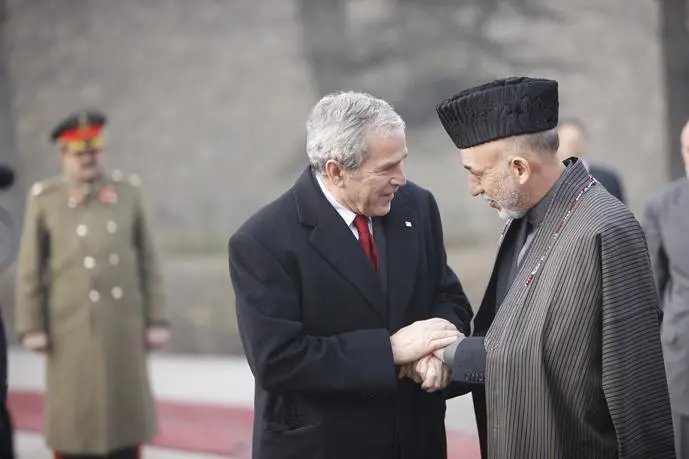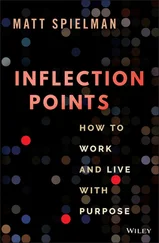Musharraf had promised Karzai and me—both skeptics of the strategy—that he would send troops back into the tribal areas if the deals failed. But instead of focusing on that problem, Musharraf and the Pakistani military were increasingly distracted by a political crisis. In March 2007, Musharraf suspended the chief justice of the Supreme Court, who he feared would rule that he was violating the law by continuing to serve as both president and army chief of staff. Lawyers and democracy advocates marched in the streets. Musharraf responded by declaring a state of emergency, suspending the constitution, removing more judges, and arresting thousands of political opponents.
Pressure mounted on me to cut ties with Musharraf. I worried that throwing him overboard would add to the chaos. I had a series of frank conversations with him in the fall of 2007. “It looks ugly from here. The image here is that you have lawyers being beaten and thrown into jail,” I said. “I am troubled by the fact that there is no apparent way forward.” I strongly suggested one: set a date for free elections, resign from the army, and lift the state of emergency.
Musharraf made each of those commitments, and he kept them. When he scheduled parliamentary elections, former Prime Minister Benazir Bhutto returned from exile to compete. She ran on a pro-democracy platform, which made her a target of the extremists. Tragically, she was assassinated on December 27, 2007, at a political rally in Rawalpindi. In February 2008, her followers won the elections soundly. They formed a government, and Musharraf stepped down peacefully. Asif Ali Zardari, Bhutto’s widower, took his place as president. Pakistan’s democracy had survived the crisis.
Over time, the Pakistani government learned the lesson of the Bhutto assassination. Pakistani forces returned to the fight in the tribal areas—not just against al Qaeda, but against the Taliban and other extremists as well. Yet more than a year had been lost, as Pakistan’s attention was focused on its internal political crisis. The Taliban and other extremists exploited that window of opportunity to increase their tempo of operations in Afghanistan, which drove up the violence and led many Afghans to turn against their government and our coalition. It was essential that we find a way to retake the offensive.

By the middle of 2008, I was tired of reading intelligence reports about extremist sanctuaries in Pakistan. I thought back to a meeting I’d had with Special Forces in Afghanistan in 2006.
“Are you guys getting everything you need?” I asked.
One SEAL raised his hand and said, “No, sir.”
I wondered what his problem might be.
“Mr. President,” he said, “we need permission to go kick some ass inside Pakistan.”
I understood the urgency of the threat and wanted to do something about it. But on this issue, Musharraf’s judgment had been well-founded. When our forces encountered unexpected resistance, they got into a firefight and made international news. “U.S. Commandos Attack Pakistan Sovereignty,” one Pakistani headline said. Islamabad exploded with outrage. Both houses of parliament passed unanimous resolutions condemning our action. No democracy can tolerate violations of its sovereignty.
I looked for other ways to reach into the tribal areas. The Predator, an unmanned aerial vehicle, was capable of conducting video surveillance and firing laser-guided bombs. I authorized the intelligence community to turn up the pressure on the extremists. Many of the details of our actions remain classified. But soon after I gave the order, the press started reporting more Predator strikes. Al Qaeda’s number-four man, Khalid al-Habib, turned up dead. So did al Qaeda leaders responsible for propaganda, recruitment, religious affairs, and planning attacks overseas. One of the last reports I received described al Qaeda as “embattled and eroding” in the border region.
We also stepped up our support for Pakistan’s democratic government. We provided money, training, and equipment, and proposed joint counterterrorism operations—all aimed at helping increase Pakistani capabilities. When the financial crisis hit in the fall of 2008, we took steps to make sure Pakistan received the assistance it needed to mitigate the effects of the recession and stay focused on fighting the extremists.
One of my national security team’s last projects was a review of our strategy in Afghanistan. It was led by Doug Lute, a brainy three-star general who coordinated day-to-day execution of our operations in Afghanistan and Iraq. The report called for a more robust counterinsurgency effort, including more troops and civilian resources in Afghanistan and closer cooperation with Pakistan to go after the extremists. We debated whether to announce our findings publicly in the final weeks of my presidency. Steve Hadley checked with his counterpart in the incoming administration, who preferred that we pass along our report quietly. I decided the new strategy would have a better chance of success if we gave the new team an opportunity to revise it as they saw fit and then adopt it as their own.

In December 2008, I made a farewell trip to Afghanistan. Air Force One landed at Bagram Air Base around 5:00 a.m., just ahead of the dawn. “I have a message to you, and to all who serve our country,” I told a hangar full of troops. “Thanks for making the noble choice to serve and protect your fellow Americans. What you’re doing in Afghanistan is important, it is courageous, and it is selfless. It’s akin to what American troops did in places like Normandy and Iwo Jima and Korea. Your generation is every bit as great as any that has come before. And the work you do every day is shaping history for generations to come.”
I shook hands with the troops and boarded a Black Hawk helicopter for the forty-minute flight to Kabul. Afghanistan is one of those places you have to see to understand. The mountains are gigantic and rugged; the terrain is harsh and bare; the landscape feels desolate and forbidding. Like many Americans, I sometimes wondered how anyone could hide from our military for seven years. When I looked at the topography of Afghanistan, it was easy to understand.
As we got closer to Kabul, I picked up an acrid smell. I realized it was coming from burning tires—sadly, an Afghan way of keeping warm. The air quality was no better on the ground. I was coughing for a week when I got home, a reminder that the country had a long way to go.
When we landed at the presidential palace, President Karzai strode over to meet me in his trademark robe and cap. He introduced me to his cabinet ministers and escorted me to a large sitting room for tea. As usual, he was energetic and exuberant. He beamed with pride as he showed me photos of his young son, Mirwais, his only child. He talked about his plans to increase Afghanistan’s agricultural yield and stimulate its business sector in areas like telecommunications. After the meetings, he walked me out into the dusty courtyard. We parted with a handshake and a hug. No doubt he had made mistakes. But despite all the forces working against him, he never lost his determination to lead his country toward a better day. He helped give the Afghan people hope, something they hadn’t had in many years. For that, he will always have my gratitude and respect.

With Karzai on the last foreign trip of my presidency. White House/Eric Draper
As I climbed aboard the chopper, I thought back to the afternoon in October 2001 when I announced the opening of the war from the Treaty Room. A country dominated by one of history’s cruelest regimes was now governed by freely elected leaders. Women who had been prisoners in their homes were serving in parliament. While still a danger, al Qaeda had lost the camps it used to train ten thousand terrorists and plan 9/11. The Afghan people had cast their ballots in multiple free elections and had built an increasingly capable army of seventy-nine thousand soldiers. Afghanistan’s economy had doubled in size. School enrollment had risen from nine hundred thousand to more than six million, including more than two million girls. Access to health care had gone from 8 percent to 80 percent. In 2010, the Pentagon revealed that geologists had discovered nearly a trillion dollars’ worth of mineral deposits in Afghanistan, a potential source of wealth for the Afghan people that the Taliban would never have found.
Читать дальше













